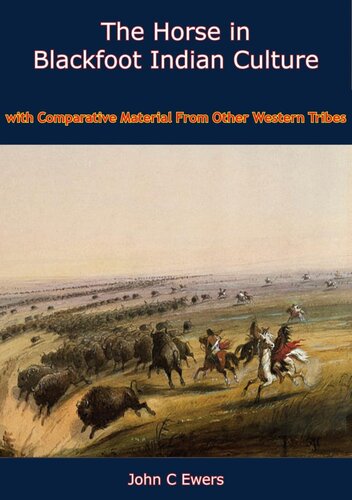

Most ebook files are in PDF format, so you can easily read them using various software such as Foxit Reader or directly on the Google Chrome browser.
Some ebook files are released by publishers in other formats such as .awz, .mobi, .epub, .fb2, etc. You may need to install specific software to read these formats on mobile/PC, such as Calibre.
Please read the tutorial at this link: https://ebookbell.com/faq
We offer FREE conversion to the popular formats you request; however, this may take some time. Therefore, right after payment, please email us, and we will try to provide the service as quickly as possible.
For some exceptional file formats or broken links (if any), please refrain from opening any disputes. Instead, email us first, and we will try to assist within a maximum of 6 hours.
EbookBell Team

4.7
106 reviewsClark Wissler (1927, p. 154) has named the period 1540 to 1880 in the history of the Indian tribes of the Great Plains "the horse culture period." This period can be defined more accurately and meaningfully in cultural than in temporal terms. Among all the tribes of the area it began much later than 1540. With some tribes it ended before 1880. Yet for each Plains Indian tribe the horse culture period spanned the years between the acquisition and first use of horses and the extermination of the economically important buffalo in the region in which that tribe lived.
Anthropologists and historians have been intrigued by the problem of the diffusion of the European horse among the Plains Indians. It is well known that many tribes began to acquire horses before their first recorded contacts with white men. Paucity of documentation has given rise to much speculation as to the sources of the horses diffused to these tribes, the date when the first Plains Indians acquired horses, the rate of diffusion from tribe to tribe, and the conditions under which the spread took place.
The three Blackfoot tribes of the northwestern Plains, the Piegan, Blood, and North Blackfoot, were among those tribes that possessed horses when first met by literate white men. To view their acquisition in proper historical and cultural perspective it is necessary to consider the larger problem of the diffusion of horses to the northern Plains and Plateau tribes.